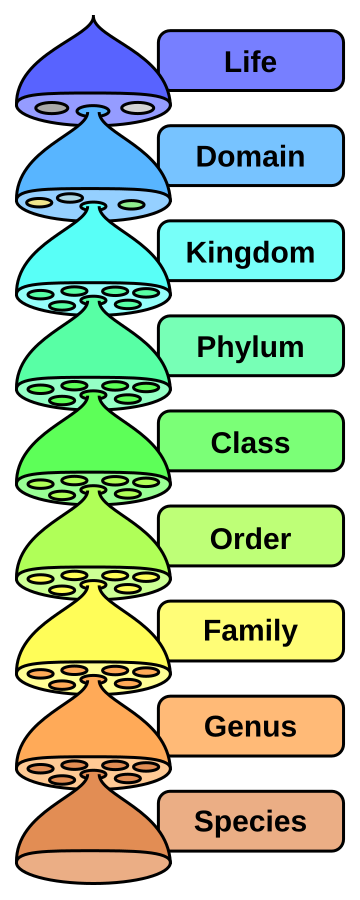A Newly Discovered Deep-Soil Bacterial Phylum, CSP1-3
Introduction
Michigan State University put out this press release on 7th April 2025, on the discovery by Professor James Tiedje, in both its Department of Microbiology, Genetics and Immunology, and Department of Plant, Soil and Microbial Sciences, of an entire phylum of bacteria 20 m underground. This phylum, CSP1-3, appears descended from aquatic bacteria which frequented hot springs and fresh waters millions of years ago.
This image below is on the press release page, but is completely unreadable! I’ve enlarged it below:

Source:
https://msutoday.msu.edu/news/2025/msu-scientists-discover-new-microbes-in-earths-deep-soil
MSU scientists discover new microbes in Earth’s deep soil
This phylum may play a vital role in the purification of water, and may harbour genes which may combat persistent environmental pollutants.
But First, What is a Phylum?
A phylum is the third-highest level, or rank, in taxonomy. (Botany uses ‘division’ for ‘phylum’.) Phylum (or division) comes after domain and kingdom, and is followed by class, order, family, genus and species:

Attribution: Peter Halasz. (User:Pengo), Public domain, via Wikimedia Commons
These are the major ranks. Minor ones such as subphylum, suborder and subgenus also exist, as do even more minor ones such as tribe and subspecies.
This ‘ranked taxonomy’ is the traditional and original hierarchy used in the classification of organisms, and dates back to the father of taxonomy, Carl Linnaeus (1707-1778).
A more modern system known as ‘cladistics’ runs in parallel and organisms are classified based on phylogenetics, or how closely related they are based on their genetics. (This is why many plants are forever being renamed and moved from one family to another, as genetic analysis shows them to be more closely related to other groups than their outward appearance would show. Did you know the entire Agave and Yucca genera were moved into the asparagus family Asparagaceae based on this?!)
A New Phylum is Quite a Big Deal!
By way of example, we, humans, are classified as follows:
Domain: Eukaryota (also written Eukarya — organisms with a membrane-bound cell nucleus)
Kingdom: Animalia
Phylum: Chordata (having a dorsal nerve cord)
Class: Mammalia
Order: Primates
Family: Hominidae
Genus: Homo
Species: sapiens
The new bacterial phylum is classified:
Domain: Bacteria
Kingdom: (Not stated. There are four under Bacteria: Bacillati, Fusobacteriati, Pseudomonadati and Thermotogati)
Phylum: CSP1-3 (the name Sysuimicrobiota has been proposed)
A phylum is quite high up in taxonomy, and thus includes a lot of organisms. The higher up one goes, the more organisms are included by definition.
For example, there are only three domains*: Bacteria, Archaea, and Eukaryota. Every single known organism fits perfectly into one of these three groups. There are no outliers and no grey areas. The distinctions between the three are so precise that any newly discovered species could be classified into a domain in no time at all.

Attribution: Maulucioni, CC BY-SA 3.0 , via Wikimedia Commons
* Under the three-domain system. There is also a two-domain system: Bacteria and Archaea, with Eukaryota included in Archaea. This was ever so subtly referenced in The xkcd Stromatolites Comic. There are arguments for either system, but the point still remains that all three labels — Bacteria, Archaea and Eukaryota — are still recognised. There is no fourth label at this highest level.
So second-nature is this, that any newly discovered organism not fitting into one of these three — or two — domains would send shockwaves through the entire life sciences world and turn all understanding of the evolution of life on its head! It really would be that monumental a discovery.
Thus whilst not quite at that level, the discovery of a new bacterial phylum is still a very noteworthy event. These bacteria are like no others this high up in the hierarchy.
The phylum we are in, Chordata, dates right back to the Cambrian explosion, or the period when multicellular organisms burst onto the scene almost 540 million years ago, after billions of years of only single-celled life. Chordata includes all vertebrates and two invertebrate groups, and today has some 81,000 living species. Many, many more have gone extinct since the Cambrian began (all those famous dinosaurs are just some of these).
Bacteria are amongst the earliest forms of life, going back at least 3.5 billion years. About 43,000 species are known, but there would be many unknown ones again simply because it is just so difficult to find them, much less know they are there to be found at all.
To find a previously unknown bacterium is exciting, but to discover an entire phylum is another level of exciting again!
And the significance of this phylum shall be covered in the next post!
About the Author
BSc(Hons), U.Syd. - double major in biochemistry and microbiology, with honours in microbiology
PhD, U.Syd - soil microbiology
Stumbled into IT and publishing of all things.
Discovered jujube trees and realised that perhaps I should have been an agronomist...
So I combined all the above passions and interests into this website and its blog and manuals, on which I write about botany, soil chemistry, soil microbiology and biochemistry - and yes, jujubes too!
Please help me buy a plant if you found this article interesting or useful!